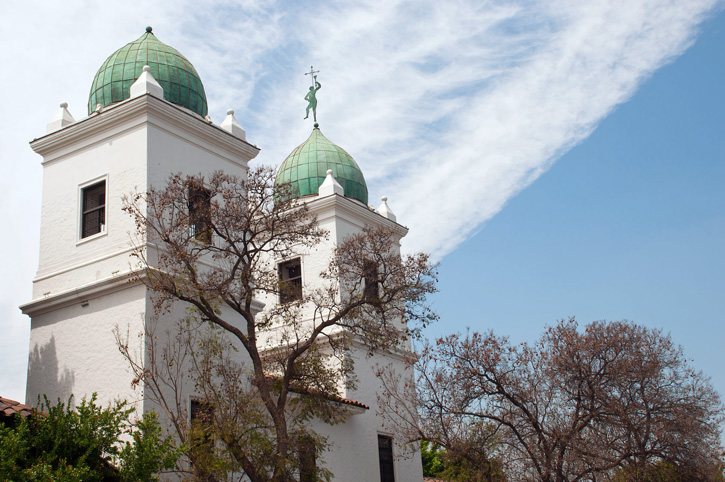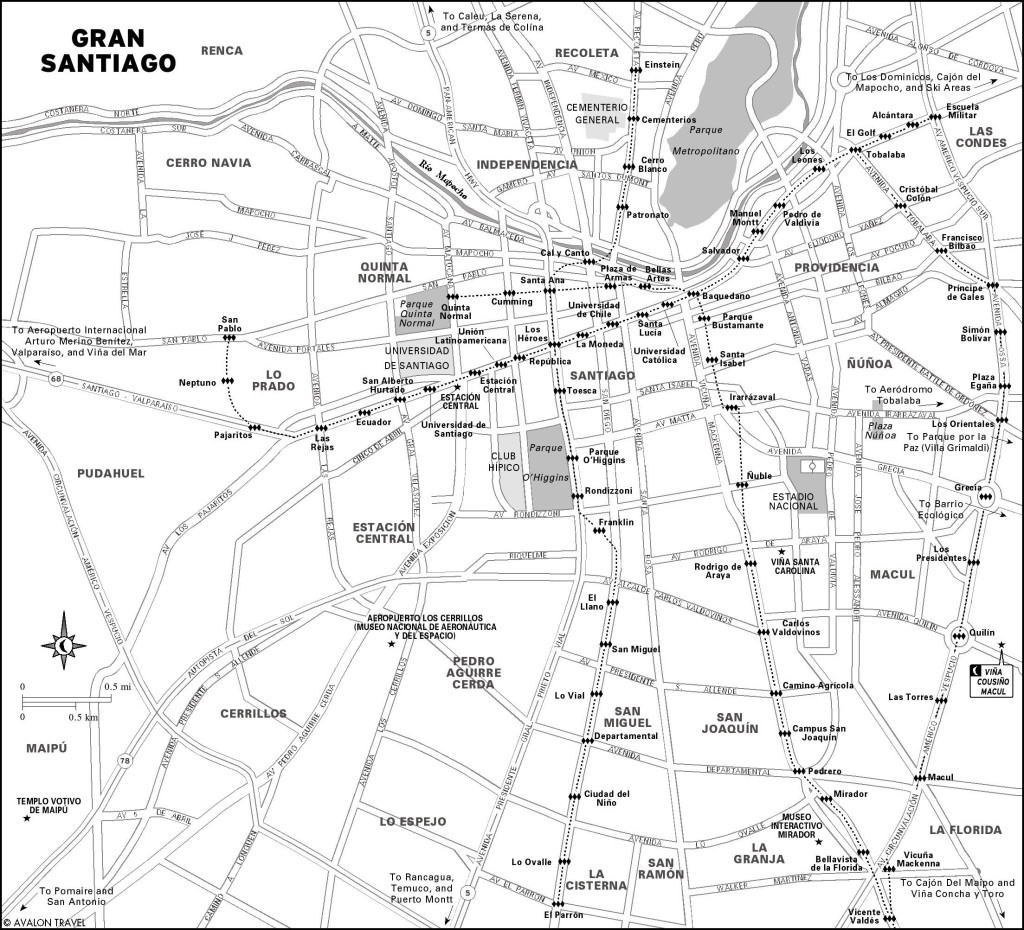Most of Santiago’s outer comunas (boroughs) have few points of interest, but some are very worthwhile. They are located mostly toward the southeastern part of the city.
One of few survivors from colonial Las Condes, the Iglesia y Convento San Vicente Ferrer de los Dominicos sits on lands that Pedro de Valdivia seized from Mapuche cacique Apoquindo for Valdivia’s mistress, Inés de Suárez. Eventually willed to the Dominican order, the property deteriorated during a century-plus of litigation, but the Dominicans managed to add its twin Byzantine domes in 1847.

The twin domes of Iglesia y Convento San Vicente Ferrer de los Dominicos. Photo © michele pautasso/123rf.
Alongside the church, where Avenida Apoquindo dead-ends at Padre Hurtado, Los Graneros del Alba (Av. Apoquindo 9085, tel. 09/7681-6870, 10:30am-7:30pm daily year-round), popularly known as “Los Dominicos,” is Santiago’s biggest crafts market, also popular for its country cuisine and impromptu entertainment. Since the extension of the Metro’s Línea 1, it’s much easier to reach.
South of Providencia, middle-class Ñuñoa has few landmarks but enjoys a vigorous cultural life on and around Plaza Ñuñoa, thanks partly to the nearby campuses of Universidad Católica and Universidad de Chile. With the Andean front range in the distance, Ñuñoa’s major landmark is the Estadio Nacional (National Stadium, Av. Grecia 2001). First famous for the 1962 World Cup, it became infamous as an impromptu prison camp after the 1973 coup, incarcerating some 7,000 Allende sympathizers (and suspected sympathizers). Many were tortured and more than a few executed (including folksinger Victor Jara and U.S. citizens Charles Horman and Frank Teruggi). Today, the stadium is once again the site of the country’s most important soccer matches, and it’s within reasonable walking distance of Línea 5’s Ñuble station.

Gran Santiago
In the southeastern borough of Peñalolén, Viña Cousiño Macul (Av. Quilín 7100, tel. 02/2351-4135, tours 11am, noon, 3pm, and 6pm Mon.-Fri., 11am and noon Sat.-Sun., US$18) is one of Chile’s oldest wineries. It has been in the same family since Matías Cousiño purchased the vineyards in 1856. Its cellars and wine museum are open for Spanish- and English-language tours. The accompanying tasting, held in an attractive bar cum sales room, includes one varietal and one reserve vintage, in a souvenir glass. The house produces cabernet, merlot, chardonnay, sauvignon blanc, and riesling. Viña Cousiño Macul is a 20-minute walk from Quilín station, on the Metro’s Línea 4.

The cellars of Viña Cousiño Macul in Peñalolén, Chile, are open for Spanish- and English-language tours. Photo © Clinton Phosavanh, licensed Creative Commons Attribution.
In suburban Pirque, Viña Concha y Toro (Victoria Subercaseaux 210, tel. 02/2476-5269, tastings 10am-5:10pm daily, US$17) offers guided English-language tours of its vineyards, grounds, cellars, and museum, along with tastings. Reservations are advisable. It’s sometimes possible to join an existing group that might include—who knows?—Mick Jagger, Bono, Helmut Kohl, Nicaraguan poet Ernesto Cardenal, and others who have toured the facilities. A separate wine bar is open 10am-6:45pm daily.
Excerpted from the Fourth Edition of Moon Patagonia.